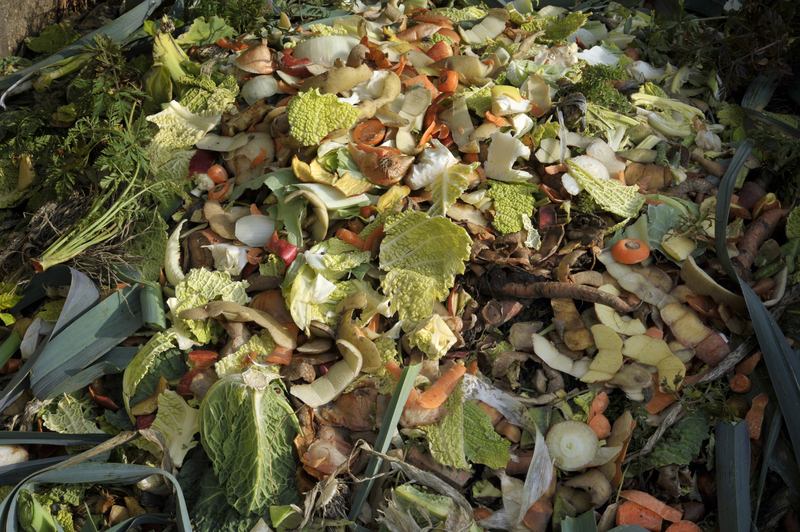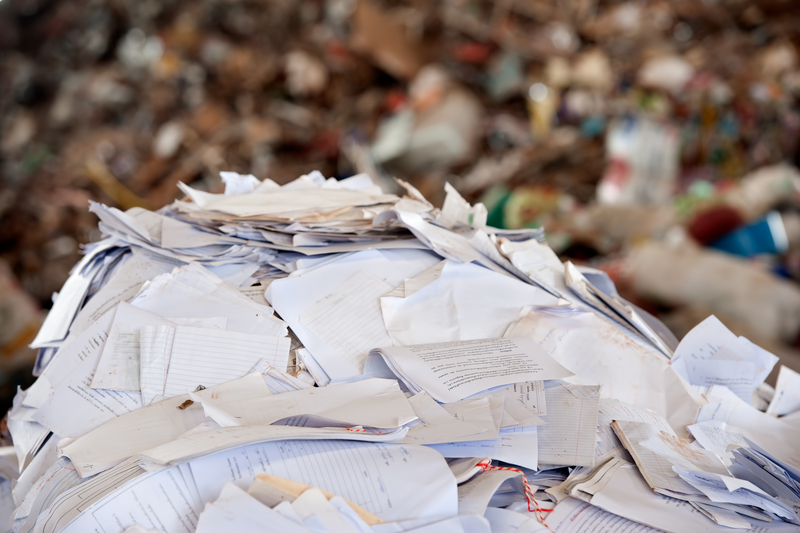Packaging for the Planet: Sustainable Cardboard Disposal
In a world dominated by e-commerce and fast-moving consumer goods, packaging is a necessity. Yet, the rising tide of waste, particularly the stacks of cardboard boxes at our doorsteps, poses a challenge for environmental stewardship. Luckily, sustainable cardboard disposal offers an effective solution to care for our planet. This comprehensive guide explores actionable strategies, innovative ideas, and crucial information about eco-friendly cardboard management.
Why Sustainable Cardboard Disposal Matters
Cardboard remains one of the most popular materials for packaging due to its light weight, affordability, and recyclability. However, improper disposal of cardboard packaging can have far-reaching effects:
- Landfill Overcrowding: When cardboard ends up in landfill, it creates methane, a dangerous greenhouse gas.
- Wasting Resources: Discarding recyclable cardboard wastes trees, water, and energy.
- Pollution: Inadequate breakdown of untreated cardboard introduces toxins into the environment.
By adopting sustainable cardboard waste management practices, we not only conserve resources but also safeguard ecosystems and reduce our carbon footprint.

The Environmental Impact of Cardboard Packaging
Production Cost - More Than Meets the Eye
Producing cardboard demands significant use of natural resources:
- Wood: Billions of trees are felled annually for paper and cardboard production.
- Water: Each cardboard box requires gallons of water, stressing local supplies.
- Energy: The manufacturing process is energy-intensive, contributing to emissions.
Unless managed responsibly, a cardboard box's environmental cost far outweighs its brief convenience in packaging and shipping.
Degradation and Methane Emissions
Cardboard is biodegradable, yet if it rots in an oxygen-poor landfill, it emits methane--a greenhouse gas far more potent than carbon dioxide. This reinforces the need for responsible cardboard disposal methods, such as recycling and composting.
Understanding Sustainable Cardboard Disposal
What Is Sustainable Cardboard Disposal?
Sustainable cardboard disposal refers to handling cardboard packaging in ways that minimize environmental harm and harness its recycling or composting potential. The goal is to create a closed-loop system, converting waste back into resources and keeping materials circulating in the economy for longer.
Benefits of Eco-conscious Cardboard Disposal
- Reduces landfill waste and associated pollution.
- Conserves natural resources and lowers demand on forests.
- Saves energy as recycled cardboard requires less power than virgin pulp.
- Supports the circular economy, generating green jobs and new packaging materials.
*In short, eco-friendly cardboard packaging disposal is good for business, the environment, and society.*
How to Dispose of Cardboard Sustainably
Transitioning to planet-friendly cardboard packaging disposal is easier than you might think. Follow these steps for optimal results:
1. Reduce and Reuse
- Reduce: Opt for minimal packaging when making purchases.
- Reuse: Repurpose cardboard boxes for storage, moving, crafts, or shipping items yourself.
Many local businesses, community centers, and libraries are grateful to accept gently used boxes for their own needs. Before tossing your packaging, consider its next possible use!
2. Prepare Cardboard for Recycling
Recycling is the gold standard for sustainable cardboard disposal. To ensure your cardboard packaging is recycled efficiently:
- Flatten boxes to save space and aid processing.
- Remove all non-cardboard materials such as tape, plastic, and packing peanuts.
- Keep cardboard dry and clean--wet or soiled cardboard may be diverted to landfill.
- Check with your local recycling guidelines for specific requirements.
Tip: Pizza boxes and food packaging with grease or food debris cannot be recycled. Instead, consider composting them (see below).
3. Compost Compostable Cardboard
Plain cardboard, especially uncoated and unprinted varieties, is compostable. Shred or rip the cardboard into small pieces and mix into your compost bin as a "brown" (carbon-rich) material.
- Ideal for: Egg cartons, toilet paper rolls, brown shipping boxes
- Avoid: Glossy, coated, or heavily printed cardboard, which may contain toxins
Composting cardboard closes the nutrient loop, enriching soils and supporting regenerative agriculture.
4. Seek Local Cardboard Recycling Solutions
If curbside recycling isn't available, planet-positive cardboard packaging disposal can be achieved through:
- Municipal drop-off centers
- Retailer take-back programs
- Commercial recyclers specializing in packaging waste
Always research local options for sustainable cardboard waste disposal in your area.
Innovations in Sustainable Cardboard Packaging
The future of eco-friendly cardboard packaging is bright, with advancements that not only minimize waste but also enhance recyclability and reuse.
Design for Circularity
- Minimalistic Packaging: Reduces excess material and uses non-toxic inks.
- Easy-to-Recycle Boxes: Avoid mixed materials and coatings that hinder recycling.
- Return Programs: Enables packaging to be sent back for reuse or recycling.
Brands that prioritize sustainable packaging design contribute to lower environmental impacts throughout the product lifecycle.
Alternative Fiber Cardboard
Manufacturers now utilize agricultural waste and fast-growing plants (like bamboo, hemp, or wheat straw) to create strong, sustainable cardboard alternatives. These approaches:
- Conserve forests
- Utilize renewable resources
- Produce compostable and easily recyclable packaging
Example: Some companies produce boxes from recycled farm waste, closing the loop from "field to package."
Smart Packaging Technologies
Connected packaging, including QR codes and smart labels, can instruct consumers on proper disposal and when to recycle, compost, or return packaging. This reduces confusion and contamination in recycling streams.
What Businesses Can Do: Leadership in Sustainable Cardboard Disposal
Organizations play a pivotal role in promoting environmentally responsible cardboard packaging disposal. Here are steps businesses can take:
Implement Packaging Audits
- Track cardboard use and disposal rates
- Identify areas to reduce packaging size/weight
- Eliminate mixed material packaging when feasible
Train Staff & Engage Customers
- Educate warehousing and fulfillment teams on sustainable practices
- Provide disposal guidance at the point of delivery
Close the Loop
- Invest in recycled or certified sustainable cardboard
- Offer incentives for returned packaging
- Partner with recyclers and local organizations
By championing green packaging policies, businesses can strengthen their brand, meet regulatory requirements, and foster customer loyalty rooted in positive environmental impact.
Cardboard Disposal Mistakes to Avoid
Even with the best of intentions, common errors undermine sustainable cardboard disposal efforts:
- Not Flattening Boxes: Unflattened boxes clog bins and sorting lines, reducing efficiency.
- Throwing Out Wet or Soiled Cardboard: Try to keep packaging dry until collection day.
- Mixing Cardboard with General Waste: This sends recyclables to landfill unnecessarily.
- Forgetting to Remove Tape and Labels: These can contaminate recycling batches.
Stay mindful and help keep the recycling loop uncontaminated!
Policy, Regulation, and the Future of Sustainable Packaging Disposal
Governments, NGOs, and consumers alike are pushing for reforms in packaging sustainability. Regulations increasingly mandate:
- Producer responsibility for packaging waste
- Minimum recycled content requirements
- Limits on single-use and hard-to-recycle materials
Supporting these moves drives large-scale change, ensuring that every cardboard box fits into a planet-friendly disposal system.

Frequently Asked Questions on Cardboard Disposal
Can greasy food boxes be recycled?
No, grease and food residue prevent cardboard fibers from being processed efficiently. Composting is usually best for these items.
What about boxes with glossy finishes or colored prints?
Some coatings, dyes, and laminates can hinder recycling. Check your local guidelines or try composting uncoated parts.
Is composting as good as recycling for cardboard?
Both methods are excellent for sustainable cardboard packaging disposal. Composting enriches soil, while recycling saves trees and energy. Aim to recycle clean cardboard and compost soiled types.
How do I know if a package is truly sustainable?
Look for certifications such as FSC, "100% recycled," or "compostable." Avoid mixed materials and unnecessary packaging wherever possible.
Conclusion: Small Steps, Big Impact
Sustainable cardboard disposal is an actionable and impactful way we can all help protect the planet. By understanding the lifecycle of cardboard packaging, making mindful choices, and taking a little extra care in disposal, the collective benefits are enormous.
- Start today--flatten, clean, and recycle your cardboard packaging.
- Support brands and retailers that prioritize eco-friendly packaging.
- Share your knowledge of sustainable cardboard waste management with friends, family, and colleagues.
Together, with responsible cardboard packaging disposal and forward-thinking design, a zero-waste future is within reach. Let's package for the planet and leave a lighter footprint for generations to come.